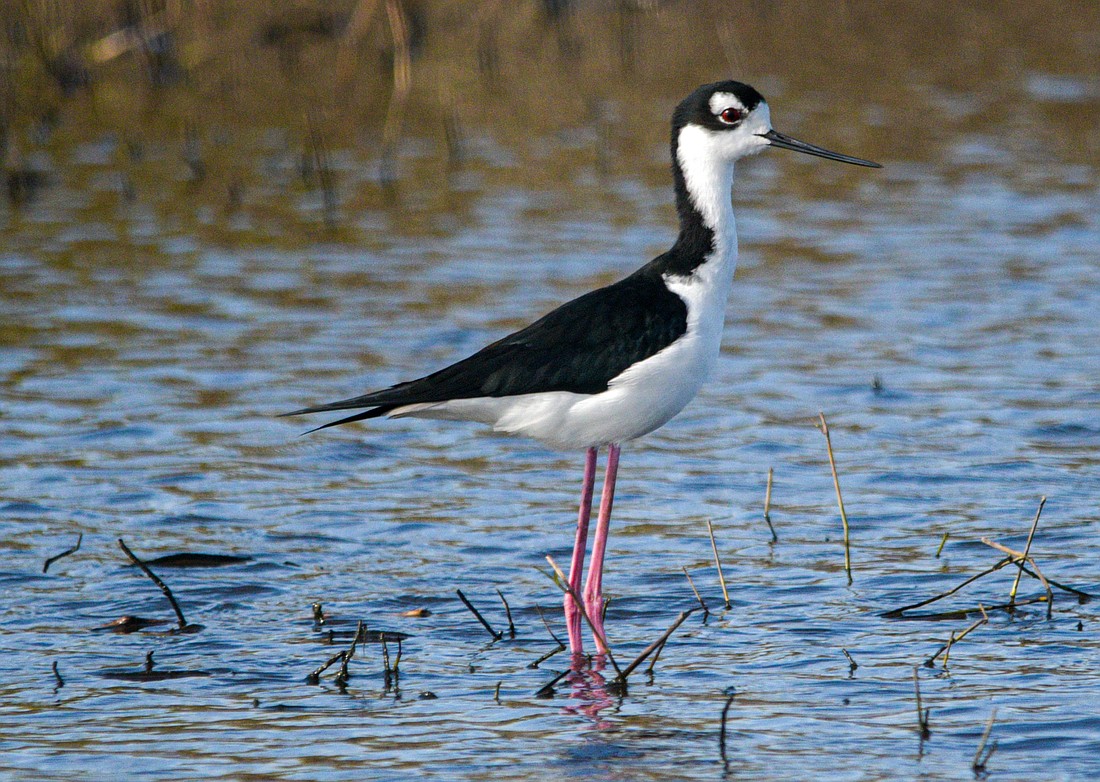- April 24, 2024
-
-
Loading

Loading

With their striking black and white plumage and the second-longest legs in proportion to their bodies of any bird (exceeded only by flamingos), the aptly named black-necked stilts are easy to spot in local wetlands and freshwater marshes. The long, rose-pink legs of this elegant shorebird come in handy for wading and running through shallow waters, where the birds forage for tiny aquatic prey by sight.
Stilts builds their nests, which are depressions lined with materials such as grass and pebbles, directly on the ground or on platforms of dried vegetation, often surrounded by water. Both parents participate in nest construction and egg incubation. Stilt chicks are born precocial, which means that they're able to walk, and feed themselves, soon after hatching.
Black-necked stilts nest in loose colonies, which allows them to defend their nests as a group. In an anti-predator behavior called "the popcorn display," groups of adults will circle a ground predator, and hop side to side while flapping their wings, all the while yipping very loudly. So, if you find yourself chastised or dive-bombed by these delicate looking birds, or any bird, for that matter, please move on, as you're clearly too close for comfort.
As they live in shallow wetlands, stilts are very sensitive to drought, which has increased with global climate change. They have adapted to climate change, as well as to habitat loss because of development, by taking advantage of artificial habitats such as retention ponds. As black-necked stilts are vulnerable to pollution runoff, particularly from pesticides, we can help protect them, and all wildlife, by replacing chemical-based fertilizers, herbicides and pesticides with safer natural strategies.